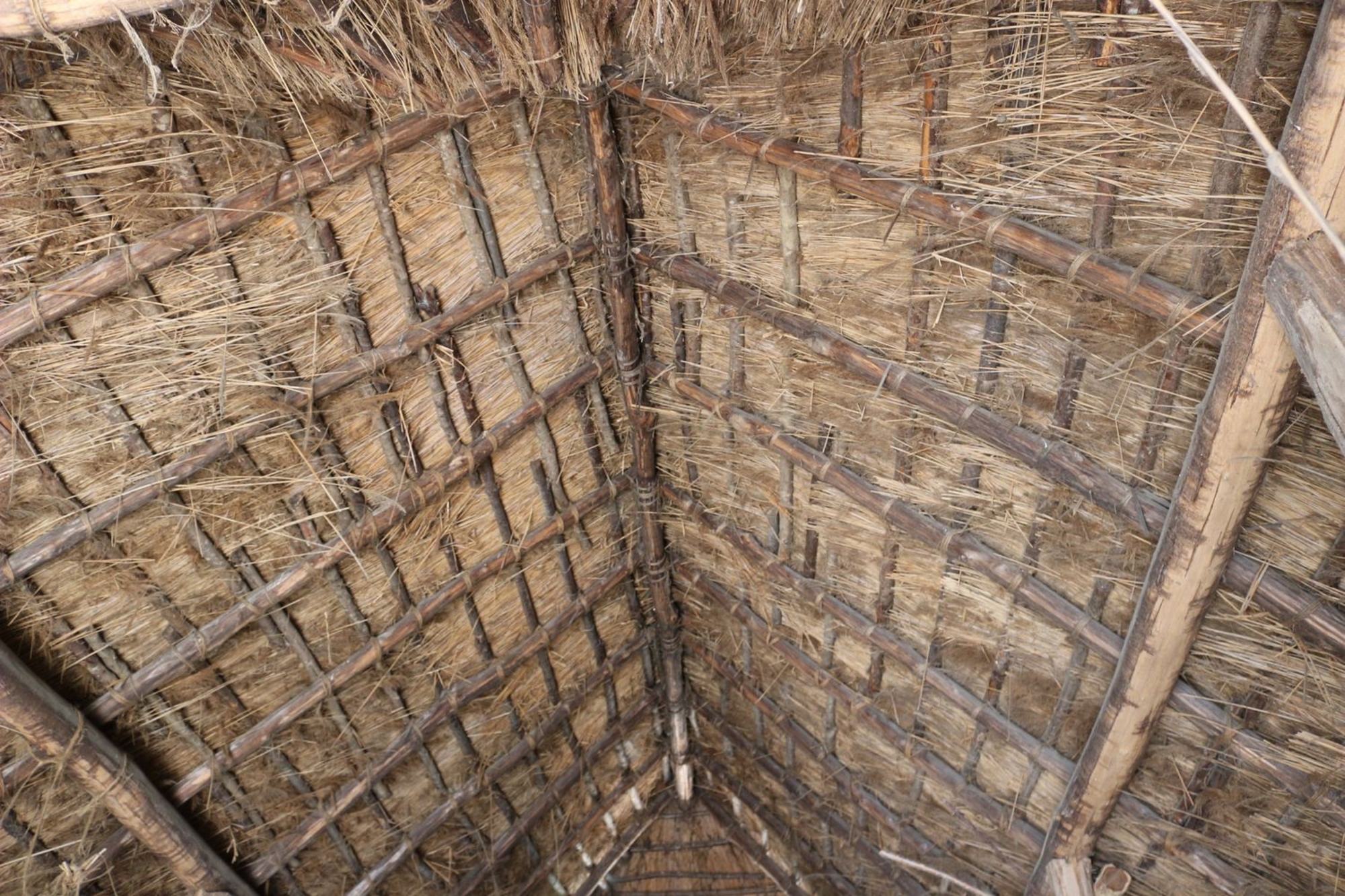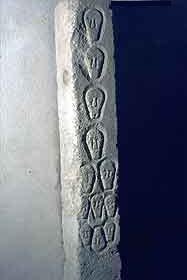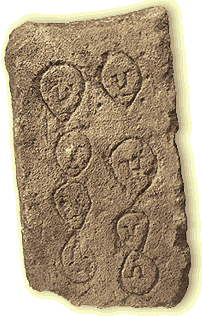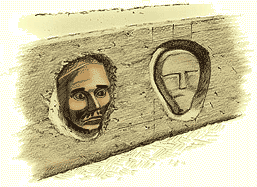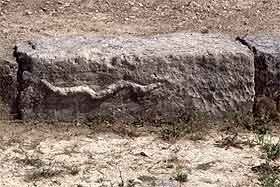- Home
- Architecture and settlement
- A sanctuary before the agglomeration
Plan of the sector of the first fortification and the hypostyle hall. Reutilized elements from the first Iron Age are indicated in blue.
Settlement 2 was constructed on or near the ancient defense line of the first settlement. Several of the architectural elements originally belonged to one or more of the earlier religious buildings.
While these latter were obviously dismantled during the building of the second settlement (around 150 BC), we cannot exclude the possibility that reused elements were not already employed in construction of the first fortification (around 175 BC).
These consist of pillars and lintels made from a fine limestone from Bibemus, which belonged to one or more religious porticos that were decorated with engravings, bas-reliefs, cephalic concavities and painted motifs. They were essentially reused in the construction of the hypostyle hall as facade stylobate and pillar and banquette bases. Other fragments were integrated in the stone foundation of street 6 and nearby walls. In addition to these portico elements, we find fragments of non-chamfered, quadrangular steles with a rustic base.
Porticos and steles are characteristic elements of religious constructions of the southern Mediterranean Midi […], principally in the lower Rhone Valley during the first Iron Age or beginning of the second Iron Age. As at Entremont, nearly all of these sculpted blocks discovered as reused objects.
General view and close-up of the architectural pillar with human heads sculpted in relief in the concavities, and symbolic representations without mouths of the Manes (spirits) of dead members of the community or a family group
General view of a stele-pillar reworked with human heads without mouths. Pecked and incised on two faces.
The oldest reutilized elements date to around 500 BC, suggesting they were used at least throughout the course of the 6th century. The cephalic concavities were destined to receive human skulls or elements of them. Today we see these exhibitions not as war trophies that would have been accompanied by sculpted simulacra, but as relic-holders that displayed the skulls of some of the honored or heroic persons depicted in the realistic, painted clay representations.
This explains the great care taken in the realization of the shallow concavities and the surrounding space, with engraved or sculpted simulacra of simplified heads. At Entremont, these reminders of the world of the dead are accompanied by representations of ears of wheat, which were considered as symbols of fertility and renewal by reincarnation. Such beliefs are firmly anchored in the spirituality of the Celts.
The spiritualistic nature and style of the motifs suggest that a large number of the reutilized remains (particularly the decorated ones) belonged to a religious complex of the first Iron Age. This culture would have inhabited the location of the future agglomerations or an area very near the plateau.
Fragment of a lintel with cephalic concavities and intermediate sculpted simulacra.
Fragment of a pillar with a representation of an ear of wheat.
